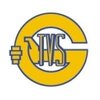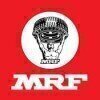Filter interviews by
ZF Friedrichshafen Quality Engineer Interview Questions and Answers
ZF Friedrichshafen Quality Engineer Interview Experiences
1 interview found
I appeared for an interview in Jul 2024.
(2 Questions)
- Q1. 8D analysis & problem solving
- Q2. Quality core tools
Top trending discussions






Interview questions from similar companies

I applied via Referral and was interviewed before Sep 2020. There were 3 interview rounds.
Interview Questionnaire
1 Question
- Q1. Please explain about your profile
Interview Preparation Tips
Be bold in your explanations.
Questions mainly fall from your profile explanation.
Try to tell what you have worked with.

I applied via Walk-in and was interviewed before Feb 2021. There were 2 interview rounds.

(2 Questions)
- Q1. Depends on experience
- Q2. Related to systematic approach
- Ans. Problem solving tools, OEE, FPY, Root cause analysis. 14Q, 5S
Interview Preparation Tips

Senior Engineer Interview Questions & Answers
Samvardhana Motherson Groupposted on 19 Jan 2021
I appeared for an interview in Jul 2020.
Interview Questionnaire
1 Question
- Q1. Waht is your achievements
- Ans.
I have achieved several milestones throughout my career as a Senior Engineer.
Successfully led a team of engineers to develop and implement a new software system, resulting in a 20% increase in efficiency.
Received recognition for designing and implementing a cost-effective solution that reduced production downtime by 30%.
Contributed to the development of a groundbreaking technology that revolutionized the industry, lead...
Interview Preparation Tips

I applied via Naukri.com and was interviewed in Dec 2020. There were 3 interview rounds.
Interview Questionnaire
1 Question
- Q1. Core Java, J2EE
Interview Preparation Tips

(2 Questions)
- Q1. Kind of t codes using in SAP for MM module ?
- Ans.
Various t-codes are used in SAP MM module for different purposes.
MM01 - Create Material Master
MM02 - Change Material Master
MM03 - Display Material Master
ME21N - Create Purchase Order
ME22N - Change Purchase Order
ME23N - Display Purchase Order
MIGO - Goods Movement
MIRO - Invoice Verification
MB51 - Material Document List
ME2N - Purchase Orders by PO Number
ME2M - Purchase Orders by Material
ME2L - Purchase Orders by Vendor
ME2
- Q2. Import material planning and purchase processes
(1 Question)
- Q1. Detailed question on previous job responsibilites
Interview Preparation Tips
Skills evaluated in this interview

Interview Questionnaire
2 Questions
- Q1. Software tool test on simple component
- Q2. You can use any tool to clear that.

I applied via Naukri.com and was interviewed in Jun 2022. There were 3 interview rounds.

Technical round asked about pervious experience and problem troubleshoot
(2 Questions)
- Q1. Hpdc related rejection reduction
- Q2. Cycle time reduction
Interview Preparation Tips

I applied via Campus Placement and was interviewed in Jan 2023. There were 3 interview rounds.

(1 Question)
- Q1. Any thing subject related
(1 Question)
- Q1. Working culture and knowledge
Interview Preparation Tips

Senior Engineer Interview Questions & Answers
Samvardhana Motherson Groupposted on 21 Aug 2023
I applied via Recruitment Consulltant and was interviewed in Feb 2023. There were 2 interview rounds.

(3 Questions)
- Q1. About session and state management
- Q2. Duplicate row deletion
- Q3. Sql server joins
Interview Preparation Tips
ZF Friedrichshafen Interview FAQs
Tell us how to improve this page.
ZF Friedrichshafen Interviews By Designations
- ZF Friedrichshafen Senior Engineer Interview Questions
- ZF Friedrichshafen Specialist Interview Questions
- ZF Friedrichshafen Software Developer Interview Questions
- ZF Friedrichshafen Engineer Trainee Interview Questions
- ZF Friedrichshafen Engineer Interview Questions
- ZF Friedrichshafen Graduate Engineer Interview Questions
- ZF Friedrichshafen Quality Engineer Interview Questions
- ZF Friedrichshafen QA Engineer Interview Questions
- Show more
ZF Friedrichshafen Quality Engineer Interview Process
based on 1 interview
Interview experience
Quality Engineer Interview Questions from Similar Companies
ZF Friedrichshafen Quality Engineer Reviews and Ratings
based on 2 reviews
Rating in categories
|
Senior Engineer
161
salaries
| ₹6 L/yr - ₹21 L/yr |
|
Senior Software Engineer
108
salaries
| ₹6.5 L/yr - ₹24.2 L/yr |
|
Technical Lead
78
salaries
| ₹9.2 L/yr - ₹28.5 L/yr |
|
Assistant Manager
58
salaries
| ₹6 L/yr - ₹18.6 L/yr |
|
Specialist
51
salaries
| ₹11 L/yr - ₹25 L/yr |

Bosch

Faurecia

Aptiv

Continental
- Home >
- Interviews >
- ZF Friedrichshafen Interview Questions >
- ZF Friedrichshafen Quality Engineer Interview Questions














